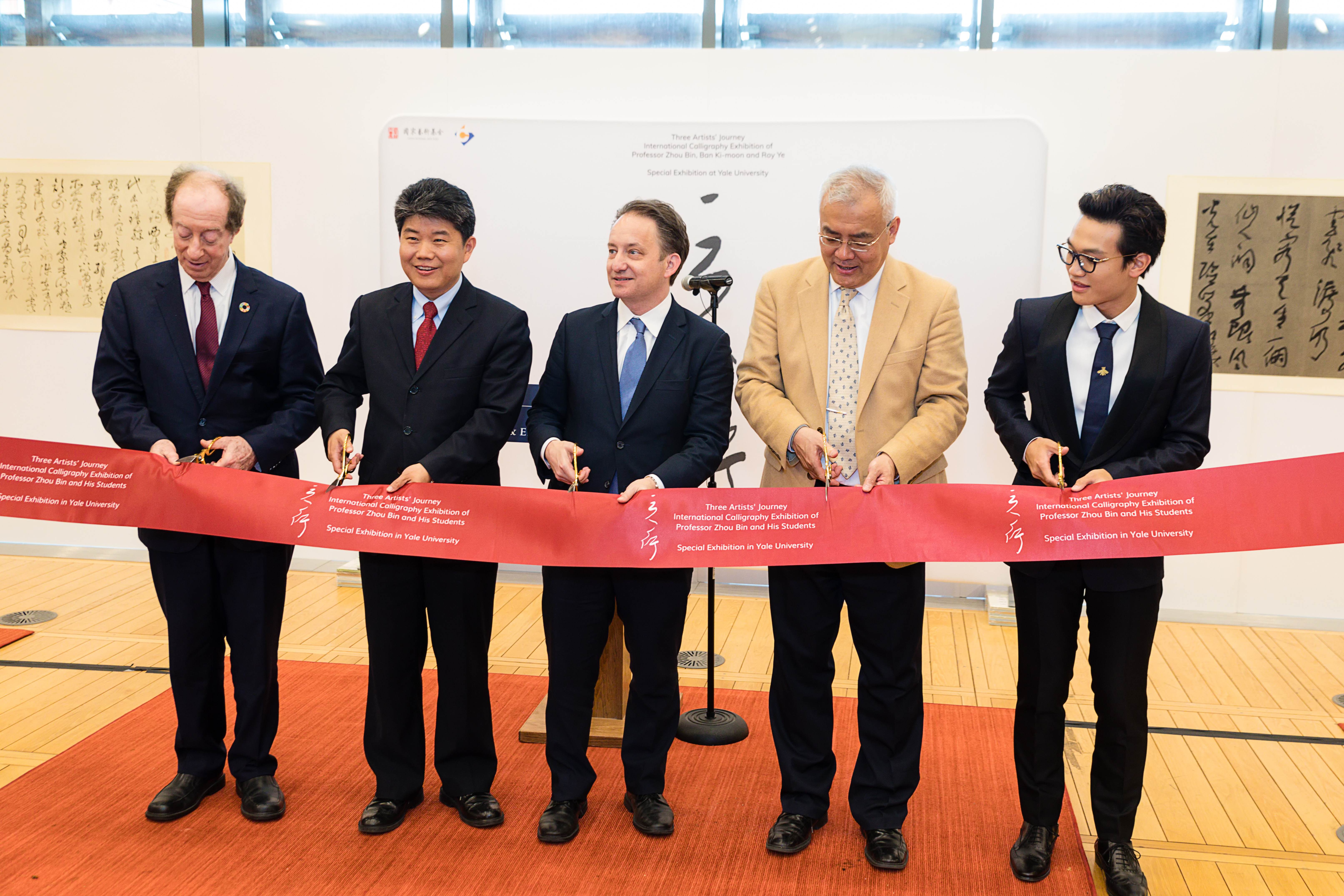
Courtesy of Zhou Bin
On Monday afternoon, as part of the opening ceremony for Kroon Hall’s latest art exhibition, “Three Artists’ Journey,” Yale’s Vice President of Global Strategy, Pericles Lewis, moderated a panel to discuss the cross-cultural merits of calligraphy. The group included Maoqi Li, who directs the Chinese News Unit at the United Nations’ Department of Public Information, Shanghai Jiao Tong University Professor Zhou Bin and Executive Chairman of Junior U.N. of Calligraphy Roy Ye.
Named after a quote from Confucius’s “The Analects,” “Three Artists’ Journey” showcases Chinese calligraphy, known as “shufa,” created by Zhou and two of his students. These students comprise former U.N. Secretary-General Ban Ki-moon, who met Zhou in 2011, and Ye, who has practiced the art for a decade. The exhibit was coordinated by Zhiyan Huang ART ’20, a current Yale School of Art student who met Zhou at a calligraphy workshop the professor held at the Parsons School of Art and Design in 2016.
Having exhibited at various North American institutions such as Columbia University and New York University, the works of calligraphy speak to themes of harmony and environmentalism — themes that resonate with the exhibition space of Kroon Hall at the School of Forestry, according to Huang.
“The works deal with themes of environmentalism, which connect with the venue of the Yale School of Forestry,” Zhou said.
Included in the exhibit is a series of pieces called “Twenty-Four Solar Terms,” which was inspired by ancient ideas of phenology and weather and will be gifted to the Yale School of Forestry. Huang noted that the sheets of paper that compose each piece in this series are recycled and the foam panels on which the works are displayed are recyclable.
The Chinese calligraphy exhibit emphasizes two of the five major styles of Chinese script, historically known as “kaishu,” or regular script, and “caoshu,” or cursive script, Zhou said. The last of the major calligraphic styles to develop, “kaishu,” appeared in the Cao Wei dynasty around 200 CE. The “kaishu” style is characterized by its neat and distinct form, making it the most widely recognized style due to its use in academia. On the other hand, “caoshu” sacrifices legibility for beautiful abstraction. Drawn without lifting the brush from the paper, characters written in this style flow into one another, creating a soft and smooth appearance.
“Most of my works exhibited here are written in cursive-script form,” Ye said during a speech at the exhibit’s opening ceremony. “Aesthetically, this script is considered the most difficult of the seven calligraphy scripts to write because it contains the use of ‘qi,’ the flow of energy. To achieve this, sometimes you have to write powerfully and sometimes you need to pay attention to flow: The script also works in conjunction with one’s soul, sometimes excavating one’s traditional knowledge while at the same time cultivating one’s creativity.”
Zhou, who studied psychology and Chinese studies before practicing calligraphy, recalled a survey he conducted that compared the perceptions of “kaishu” and “caoshu” styles in both Chinese and American audiences. He noted that Chinese students, who understand the meaning conveyed in the calligraphic texts, preferred the neat regular script over the abstract cursive script. Conversely, American students, who were more likely to interpret both forms of script as visuals rather than meaningful writing, preferred the cursive script.
“Professor Zhou’s approach to calligraphy is interdisciplinary, as he brings his academic training in psychology and cross-cultural communication into his work as a calligrapher,” Ye said.
Ye added that his current position allows him to “use calligraphy as a way of engaging in educational and cultural activities to promote the cause of peace [while] promoting greater understanding in East-West cultural exchanges, both at the United Nations and around the world.”
The exhibit marks Yale’s recent engagement with Shanghai Jiao Tong University, a major research institution that is part of China’s elite C9 League. According to Lewis, the two schools have had a close partnership in the field of medical research.
“We want to collaborate in all realms — economic development, political understanding, how to best deal with challenges like the environment or health and also cultural exchange,” said Lewis. “And this is just a great example of cultural exchange between the U.S. and China.”
Michelle Li | michelle.li.mml59@yale.edu







